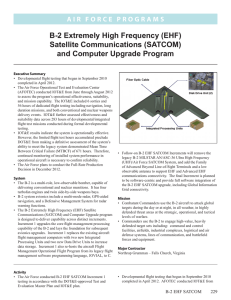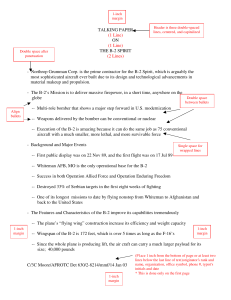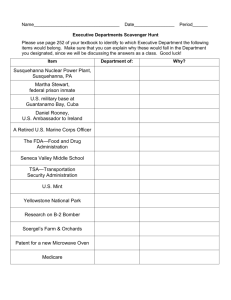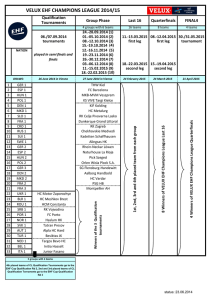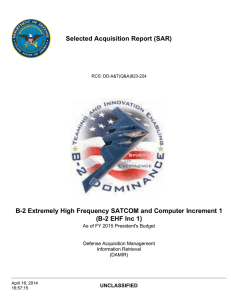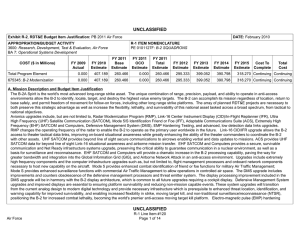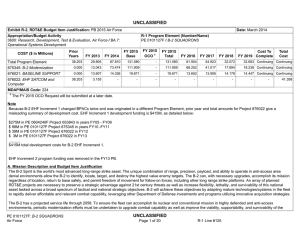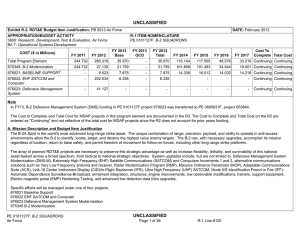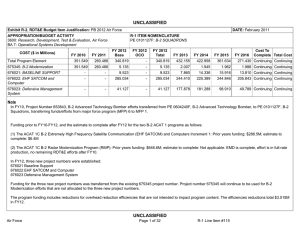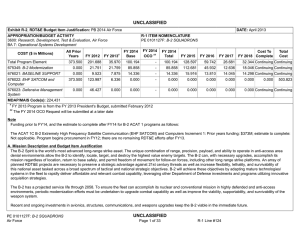B-2 Extremely High Frequency (EHF) Satellite Communications (SATCOM) Increment 1
advertisement
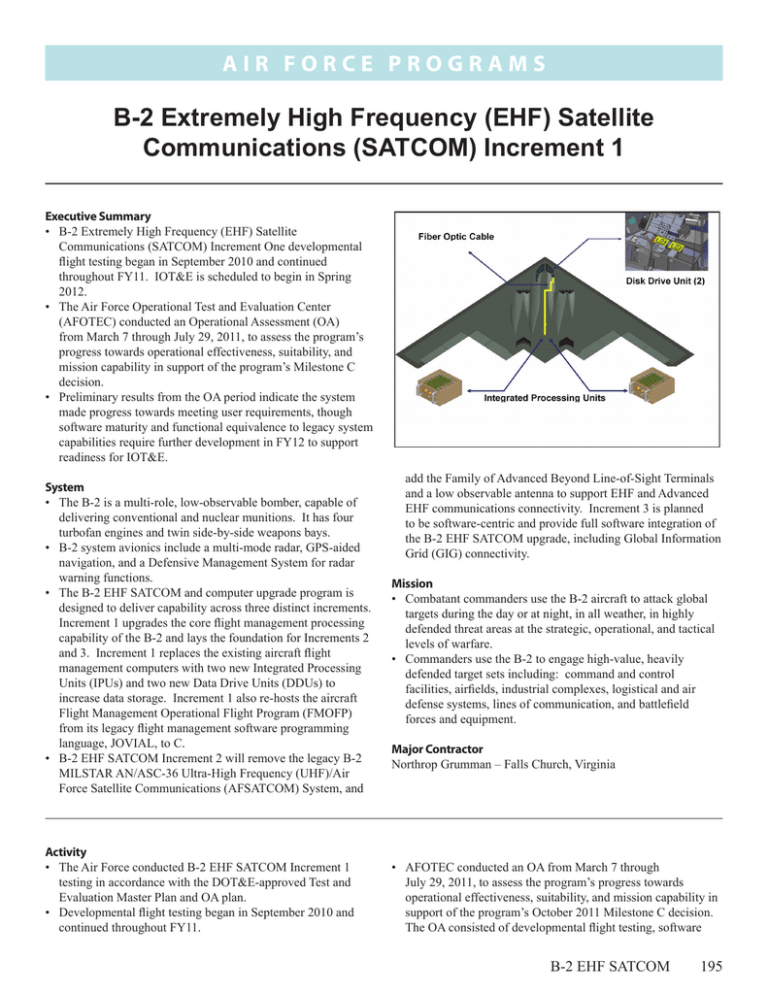
Ai r F o r c e P ROGRAMS B-2 Extremely High Frequency (EHF) Satellite Communications (SATCOM) Increment 1 Executive Summary • B-2 Extremely High Frequency (EHF) Satellite Communications (SATCOM) Increment One developmental flight testing began in September 2010 and continued throughout FY11. IOT&E is scheduled to begin in Spring 2012. • The Air Force Operational Test and Evaluation Center (AFOTEC) conducted an Operational Assessment (OA) from March 7 through July 29, 2011, to assess the program’s progress towards operational effectiveness, suitability, and mission capability in support of the program’s Milestone C decision. • Preliminary results from the OA period indicate the system made progress towards meeting user requirements, though software maturity and functional equivalence to legacy system capabilities require further development in FY12 to support readiness for IOT&E. System • The B-2 is a multi-role, low-observable bomber, capable of delivering conventional and nuclear munitions. It has four turbofan engines and twin side-by-side weapons bays. • B-2 system avionics include a multi-mode radar, GPS-aided navigation, and a Defensive Management System for radar warning functions. • The B-2 EHF SATCOM and computer upgrade program is designed to deliver capability across three distinct increments. Increment 1 upgrades the core flight management processing capability of the B-2 and lays the foundation for Increments 2 and 3. Increment 1 replaces the existing aircraft flight management computers with two new Integrated Processing Units (IPUs) and two new Data Drive Units (DDUs) to increase data storage. Increment 1 also re-hosts the aircraft Flight Management Operational Flight Program (FMOFP) from its legacy flight management software programming language, JOVIAL, to C. • B-2 EHF SATCOM Increment 2 will remove the legacy B-2 MILSTAR AN/ASC-36 Ultra-High Frequency (UHF)/Air Force Satellite Communications (AFSATCOM) System, and Activity • The Air Force conducted B-2 EHF SATCOM Increment 1 testing in accordance with the DOT&E-approved Test and Evaluation Master Plan and OA plan. • Developmental flight testing began in September 2010 and continued throughout FY11. add the Family of Advanced Beyond Line-of-Sight Terminals and a low observable antenna to support EHF and Advanced EHF communications connectivity. Increment 3 is planned to be software-centric and provide full software integration of the B-2 EHF SATCOM upgrade, including Global Information Grid (GIG) connectivity. Mission • Combatant commanders use the B-2 aircraft to attack global targets during the day or at night, in all weather, in highly defended threat areas at the strategic, operational, and tactical levels of warfare. • Commanders use the B-2 to engage high-value, heavily defended target sets including: command and control facilities, airfields, industrial complexes, logistical and air defense systems, lines of communication, and battlefield forces and equipment. Major Contractor Northrop Grumman – Falls Church, Virginia • AFOTEC conducted an OA from March 7 through July 29, 2011, to assess the program’s progress towards operational effectiveness, suitability, and mission capability in support of the program’s October 2011 Milestone C decision. The OA consisted of developmental flight testing, software B-2 EHF SATCOM 195 Ai r F o r c e P ROGRAMS laboratory testing, and maintenance demonstration activities. The OA flight test period encompassed 31 EHF developmental test sorties and 105 flight test hours across three developmental operational flight program software releases. • The program reached Milestone C in October 2011. IOT&E is currently scheduled to begin in April 2012 and complete in June 2012. Assessment • The program demonstrated incremental progress towards achieving operational effectiveness and suitability goals during FY11 developmental testing. EHF ground operations‑related software stability has yet to demonstrate maturity and functionality consistent with legacy B-2 system capabilities. • Preliminary performance results from the OA period suggest conventional weapons accuracy and navigational system accuracy made progress towards meeting performance requirements. However, communications systems were unable to demonstrate satellite communications capability during the assessment period. B-2 operational unit alert response posture further requires that the aircraft be capable of radio communications under internal power prior to engine start; yet, the B-2 was unable to demonstrate this capability during the assessment period. Additionally, software instability forced 196 B-2 EHF SATCOM multiple attempts to load mission software on the ground, and loading instability resulted in extended ground operations timelines and work-around actions inconsistent with legacy system performance. • Preliminary suitability results from the OA period indicate hardware reliability, mean repair time, and maintenance man hours per flight hour metrics were progressing to meet system requirements. Integrated diagnostics fault isolation and detection accuracy were immature during the OA period and made little progress towards meeting the user requirements. • The B-2 EHF SATCOM Increment One system demonstrated progress during FY11 test activities; however, system demonstration of software maturity and correction of deficiencies identified during developmental testing remain to be accomplished prior to FY12 IOT&E. Recommendations • Status of Previous Recommendations. This is the first annual report for this program. • FY11 Recommendation. 1. The Air Force should continue to focus on resolving software maturity and performance shortfalls to ensure system readiness for FY12 IOT&E.
